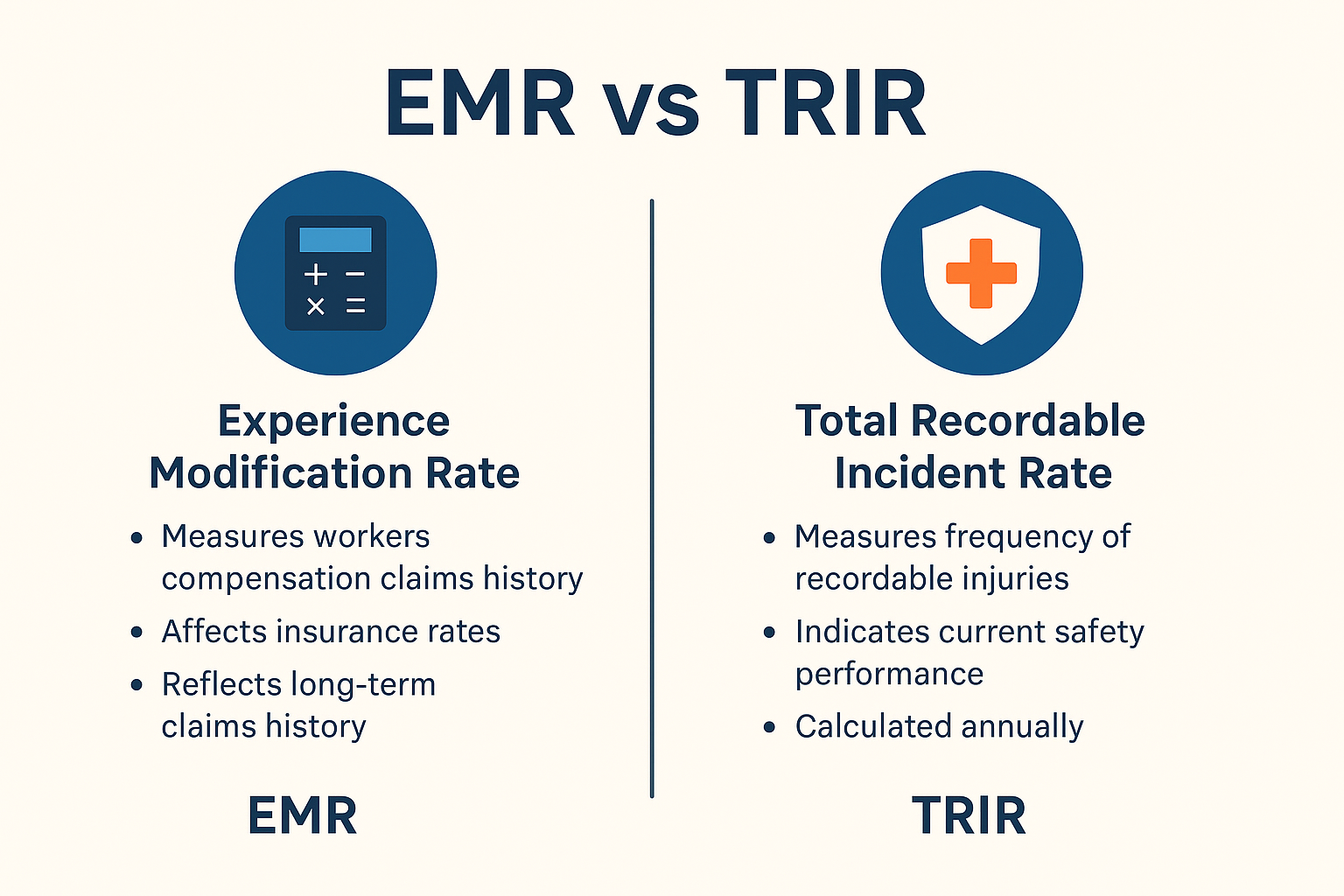Workplace safety is more than compliance; it’s a commitment to creating an environment where employees feel protected and valued. Effective leadership coaching is a critical component in achieving this goal. By empowering leaders with the tools to promote safety-focused behaviors, organizations can foster a culture of accountability and proactive risk management.
At EHS Momentum, we understand that leadership plays a pivotal role in workplace safety. With over 20 years of experience in the heavily regulated environmental sector, our president, Chip Duffie, has dedicated his career to helping organizations build robust, operations-focused EHS programs. This blog explores the intersection of leadership coaching and workplace safety, providing actionable insights for businesses looking to strengthen their safety culture.
The Role of Leadership Coaching in Workplace Safety
Leadership coaching equips managers and supervisors with the skills to lead by example, communicate effectively, and prioritize safety in their operations. Here’s how it makes a difference:
Promoting Safety-Focused Decision Making
Coaching helps leaders recognize the long-term benefits of prioritizing safety over short-term productivity gains.
Enhancing Communication Skills
Effective leaders create open channels of communication, encouraging employees to voice safety concerns without fear of retaliation.
Building Accountability
Coaching instills a sense of responsibility in leaders, ensuring they hold themselves and their teams accountable for adhering to safety standards.
Strengthening Team Morale
When leaders visibly commit to safety, it fosters trust and boosts employee morale, leading to a more engaged workforce.
4 Key Elements of a Leadership Coaching Program for Safety
An effective leadership coaching program tailored to workplace safety includes:
1. Risk Awareness Training
- Educating leaders on identifying and mitigating potential hazards.
- Emphasizing the importance of proactive risk management.
2. Behavioral Safety Strategies
- Coaching leaders to model safe behaviors and reinforce them among their teams.
- Addressing the psychological aspects of safety, such as stress management and focus.
3. Incident Response Training
- Preparing leaders to handle workplace incidents effectively, from immediate response to post-incident reviews.
- Emphasizing transparency and learning from mistakes to prevent future issues.
4. Continuous Improvement Plans
- Encouraging leaders to seek feedback and adapt their safety strategies to evolving workplace dynamics.
- Incorporating regular evaluations and updates to safety protocols.
The Connection Between Leadership Coaching and Compliance
Regulatory compliance is a cornerstone of workplace safety, particularly in industries with stringent environmental, health, and safety (EHS) requirements. Leadership coaching bridges the gap between compliance and day-to-day operations by:
- Ensuring leaders understand and adhere to regulatory standards.
- Helping teams integrate compliance into routine processes without disrupting productivity.
- Fostering a culture where compliance is seen as a shared responsibility, not just a management directive.
Chip Duffie’s hands-on experience with EHS compliance uniquely positions EHS Momentum to deliver coaching that aligns safety initiatives with regulatory requirements.
Real-World Benefits of Leadership Coaching for Workplace Safety
Companies that invest in leadership coaching often see measurable improvements in their safety performance. Here are some real-world benefits:
Reduced Incident Rates
Organizations with safety-focused leaders experience fewer workplace accidents, leading to lower costs and improved employee well-being.
Higher Employee Retention
A strong safety culture contributes to job satisfaction, reducing turnover and attracting top talent.
Enhanced Reputation
Businesses known for their commitment to safety gain a competitive edge in their industry.
Financial Savings
Preventing accidents and ensuring compliance reduces expenses associated with fines, lawsuits, and workers’ compensation claims.
How EHS Momentum Delivers Leadership Coaching for Safety
At EHS Momentum, our leadership coaching programs are designed to unlock the full potential of your EHS initiatives. Here’s what sets us apart:
- Personalized Approach: Chip Duffie works closely with clients to understand their unique challenges and develop tailored solutions.
- Hands-On Training: Our coaching emphasizes practical strategies that leaders can implement immediately.
- Long-Term Support: We provide ongoing guidance, helping businesses adapt to new regulations and workplace dynamics.
- Integration with Safety Committees: As active participants in client safety committees, we ensure leadership coaching aligns seamlessly with broader safety goals.
Building a Safety-First Culture
Leadership coaching is most effective when combined with a company-wide commitment to safety. To build a safety-first culture:
- Lead by Example: Encourage leaders to model safe behaviors consistently.
- Empower Employees: Provide training and resources that enable all team members to take ownership of workplace safety.
- Recognize Achievements: Celebrate milestones and successes to reinforce the value of safety initiatives.
- Foster Collaboration: Involve employees at all levels in developing and refining safety protocols.
Measuring the Impact of Leadership Coaching on Workplace Safety
To ensure the effectiveness of leadership coaching programs, it’s essential to measure their impact on workplace safety. Key performance indicators (KPIs) to track include:
Incident Rates
- Monitor reductions in workplace accidents and near-misses after implementing leadership coaching.
- Compare pre- and post-coaching data to gauge improvements.
Employee Engagement
- Use surveys to assess employees’ perception of safety and their confidence in leadership.
- Higher engagement often correlates with a safer work environment.
Compliance Metrics
- Track adherence to regulatory standards, including the number of violations or corrective actions needed.
- Measure the time taken to address safety concerns or implement new protocols.
Financial Metrics
- Evaluate cost savings from reduced workers’ compensation claims and fewer fines for non-compliance.
Leadership Coaching for Emerging Safety Challenges
As workplaces evolve, new safety challenges emerge. Leadership coaching equips managers to handle these complexities:
Adapting to Technological Changes
- Integrate new tools like AI-driven safety monitoring systems while maintaining human oversight.
- Train leaders to use data effectively for proactive safety decisions.
Managing Remote and Hybrid Teams
- Address unique safety risks, such as ergonomic issues or inadequate home office setups.
- Coach leaders to communicate safety expectations clearly in remote environments.
Navigating Generational Diversity
- Tailor safety training and communication styles to meet the needs of a multigenerational workforce.
- Encourage collaboration and mutual respect across age groups.
4 Common Pitfalls in Leadership Coaching for Safety
To maximize the benefits of leadership coaching, avoid these common mistakes:
1. Focusing Solely on Compliance
- While compliance is critical, coaching should also emphasize proactive safety behaviors and a positive safety culture.
2. Overlooking Emotional Intelligence
- Effective leaders understand the emotional needs of their teams, creating trust and encouraging open communication about safety concerns.
3. One-Size-Fits-All Training
- Generic coaching programs may not address industry-specific risks or company-specific challenges.
4. Lack of Follow-Up
- Without ongoing support, coaching lessons may fade over time. Regular reinforcement ensures lasting impact.
EHS Momentum’s tailored approach ensures these pitfalls are avoided, delivering meaningful results for your organization.
Integrating Leadership Coaching with Broader EHS Programs
Leadership coaching is most effective when integrated with a comprehensive EHS program:
- Data-Driven Insights: Use incident reports and safety audits to identify coaching focus areas.
- Cross-Functional Collaboration: Involve HR, operations, and EHS teams in designing and delivering coaching programs.
- Continuous Learning: Encourage leaders to stay updated on industry trends and emerging safety practices.
- Feedback Loops: Regularly collect feedback from employees and adjust coaching strategies as needed.
The 3 Long-Term Benefits of Leadership Coaching
Leadership coaching is a long-term investment that yields sustained benefits for organizations:
1. Resilience in Crisis
- Leaders trained in safety can effectively navigate emergencies, minimizing disruption and maintaining trust.
2. Competitive Advantage
- Companies with strong safety records are more attractive to top talent, customers, and investors.
3. Organizational Growth
- A focus on safety lays the foundation for scalable operations, as safe practices reduce operational risks.
Take the First Step Toward Safer Workplaces
Leadership coaching isn’t just an investment in your managers—it’s an investment in your entire organization. By prioritizing safety through effective coaching, you can reduce risks, enhance morale, and achieve long-term success.
At EHS Momentum, we’re committed to helping companies transform their approach to workplace safety. Contact us today to learn more about our leadership coaching programs and how we can support your EHS goals. Let’s build a safer, more successful future together.







